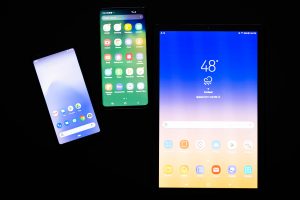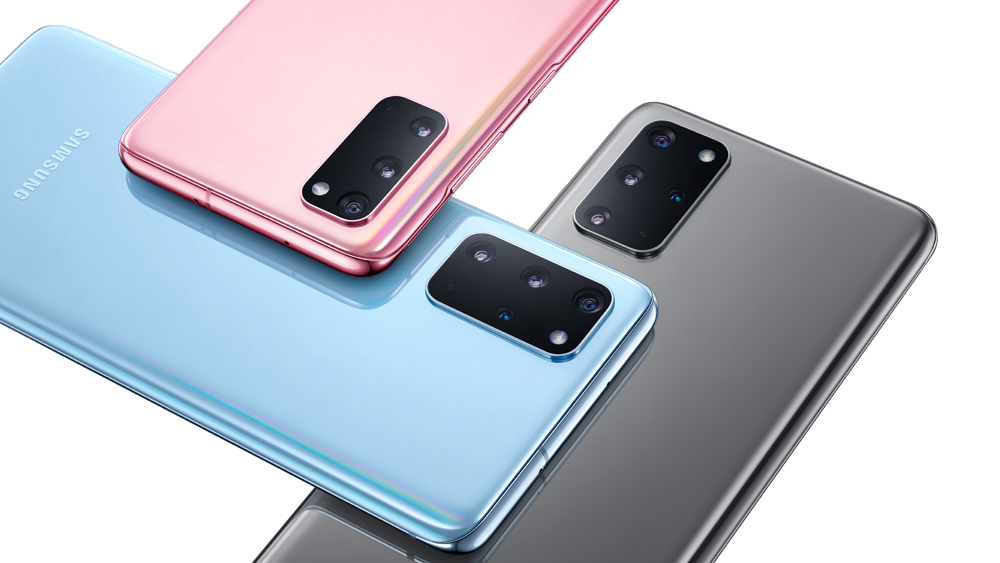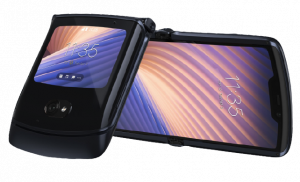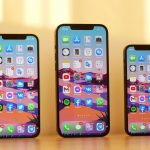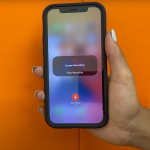As 2021 is just beginning, it’s a great time to look at the most popular devices to consider for Android app testing. Every year, you can expect brands like Samsung, Google, LG, Huawei, and Xiaomi to release new Android devices. Android made up just over 70% of the worldwide market share of mobile operating systems, according to Statcounter. It’s best to include a wide variety of Android devices in your mobile app testing.
Android versions and device fragmentation
Unlike iOS, Android is supported by a large variety of mobile device manufacturers. According to Statista, there are an estimated 3.5 million smartphones worldwide, which would mean that around 2.5 billion of those are running on Android. Android is supported on devices manufactured by Google, Motorola, OnePlus, Sony, Samsung, LG, Nokia, Huawei, and Xiaomi, along with other manufacturers.
With such a variety of devices, it’s important to look at what’s the most popular within your target demographic. Samsung achieved 30% of the U.S. market share in Q3 2020, but only 23% of the market share worldwide. Brands like Huawei and Xiaomi aren’t as popular in the U.S. However, they achieved 14.9% and 13.5% of the global market share in that same timeframe.
In addition to Android users varying in the manufacturers they use, they also use a wide variety of Android versions. Android hasn’t released official statistics since May of 2019, but people across the world are estimated to run 13 different versions of Android across hundreds of Android phones. This fragmentation means that it’s important to support more than the most recent OS for your apps. Going as far back as Android Marshmallow (6.0) can be useful to ensure coverage.
According to statistics gathered by Mixpanel, Android adoption has been growing, especially at the end of 2020. At the beginning of the year, Android had 54.80% of the market; by December, that percentage had risen to 61.70%, as shown in the chart below.
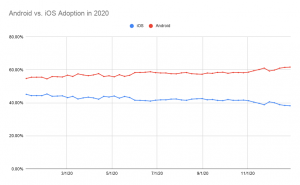
Understanding your target audience, defining your list of Android devices
To plan for developing or testing an Android application, it’s important to identify your target audience. What devices are popular vary by region, so you must identify where your target audience is located. Manufacturers like Samsung and Google are typically popular in the U.S., while Xiaomi and Huawei are often more popular in Europe and China.
For example, according to Counterpoint Research, the top manufacturers in the U.S. and China differed greatly in Q3 2020. Samsung maintained the highest Android market share in the U.S. with 30%. Huawei has achieved 43% of the market share in China. LG and Lenovo/Motorola are some of the top manufacturers in the U.S. In China, Vivo, Oppo, and Xiaomi make that list. These are often mid-range devices with quality hardware and features. These budget-friendly options have convinced a large number of users to switch to these new brands.
Top devices for Android app testing in 2021
In the first half of 2020, Samsung remained in the lead for mobile devices worldwide with 20.24% of the market share. Huawei got close to bridging the gap between them, with 18.85% of the market share worldwide. Despite its popularity in the U.S., Apple only achieved 11.89% of the market share.
We tested hundreds of web and mobile apps in 2020 and gathered data from websites that collect and share analytics from millions of users to create the following list of the most popular Android devices in 2020.
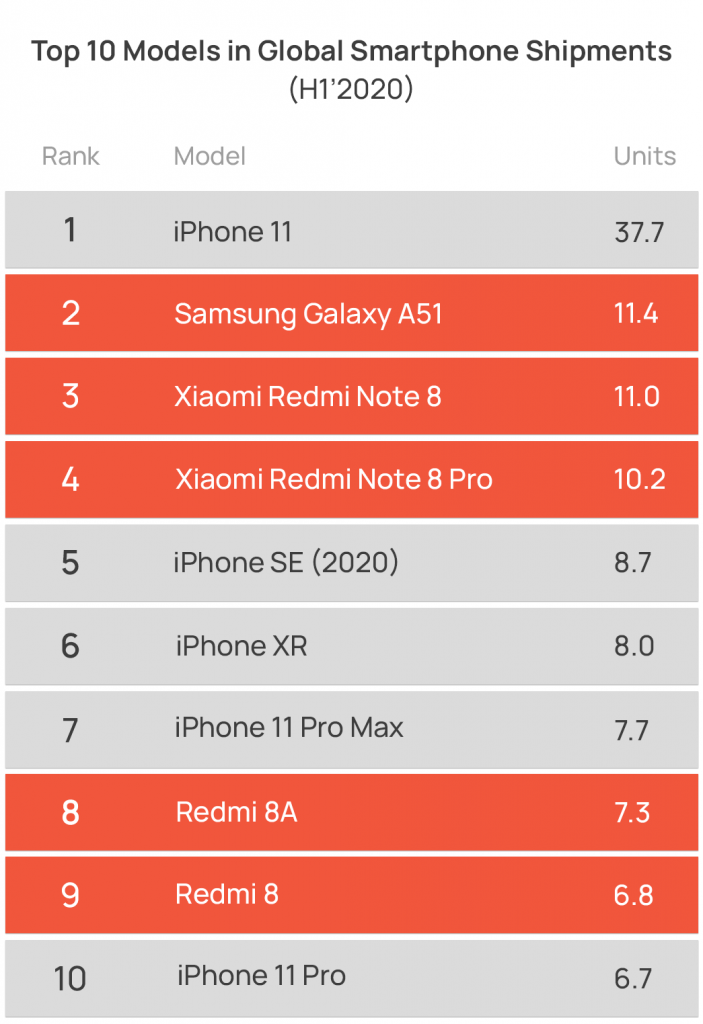
Galaxy A51
Samsung only had one device on the list of the top 10 smartphones sold in the 1st half of 2020, according to research by Omdia. The Galaxy A51 sold 11.4 million units, second only to the iPhone 11 in that timeframe. Unlike last year, when flagship devices like the Galaxy S9, S10, and S10+ were the most popular, the Galaxy A51 is one of Samsung’s mid-range devices. Samsung had four devices in the top 10 last year, so this isn’t the best news for Samsung.
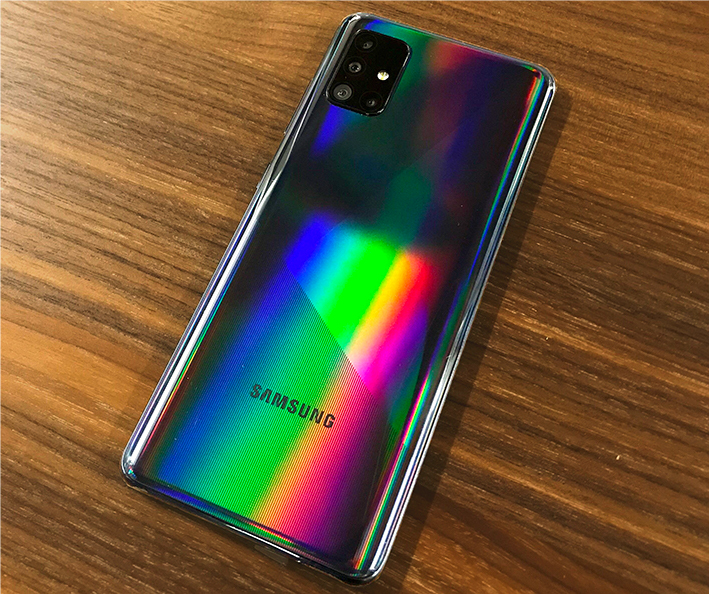
Redmi Note 8 and Redmi Note 8 Pro
Xiaomi is less well-known in the U.S. but it manufactures some of the most popular devices worldwide. The Redmi Note 8 sold 11 million units, following closely behind Samsung’s Galaxy A51.
Redmi 8A and Redmi 8
The Redmi 8A and Redmi 8 sold a combined 14.1 million units in H1, so it’s clear that these devices are popular. This is a great device to include if you’re launching your app or website worldwide.
Galaxy S10 and S20 Series
Samsung’s flagship phones weren’t in the top 10 models in global smartphone shipments in H1 of 2020, but they’re still popular. In Q3 of 2020, Samsung reclaimed the top spot in smartphone shipments with 80.4 million smartphones shipped in that timeframe. With 22.7% of the market share worldwide, almost one in every four smartphones is a Samsung device.
The Galaxy S20 didn’t sell as well as its predecessor. It achieved only 80% of the sales as the S10 series, according to reports from Korea’s Yonhap News. Nonetheless, as the most recent flagship device, it’s often important to include these devices in your testing plan. It can be helpful to know how your app or mobile website works on the newest line, as they will likely continue to become popular and will be supported through the next three Android updates. It can also be helpful to include older Samsung devices, like the Galaxy S7, S8, and S9, as these devices are still widely in use.
Google Pixel 4 and Pixel 5
Google acquired Android in 2015 and has released new OS versions on the Pixel line first since its release in 2016. Including the newest Pixels in your testing plan ensures your applications are tested on the newest Android versions as soon as they’re released. Although these devices aren’t selling in the same quantities as competitors like Samsung, they’ve been gaining traction. Pixel sales rose 52% in 2019 compared to their sales in 2018.
Foldable Devices
As smartphones continue to innovate, you can expect to see more foldable devices released and adopted by users. At this point, Motorola and Samsung have both released a few foldable phones. Motorola released a 2019 and 2020 version of their classic Razr. Samsung released the Galaxy Z flip to compete directly with Motorola’s offerings. Samsung has also released the Galaxy Z Fold and Fold 2, which offer a different take on how the phones fold. The Galaxy Z Fold is considered to have kicked off the mainstream foldable phone trend. Although these phones aren’t as popular as the others on this list, they can still be helpful to include.
Testing on Android 11
Last year, Android 10 had the fastest adoption rate of any Android version, running on 100 million devices five months after launch. Only two months after the launch Android 11 has been adopted on more devices than Android 10 was in the same timeframe, according to an Android developer blog post. That doesn’t guarantee that it will have a faster adoption rate than Android 10 did as time goes on. Regardless, it’s important to account for any major OS version like Android 11 when testing your Android app.
Although we highlighted the most popular devices in 2020, we recommend including older devices when testing, especially for Android apps. We’ve covered the top devices for Android app testing for 2020, 2019, and 2018, so check out our previous posts for more ideas.
With more than 400 devices in our lab, we support Android app testing for dozens of organizations each year. We have experience with all types of applications, from healthcare to e-commerce. If you are looking for a testing partner to test the functionality, compatibility, or accessibility of your Android app, get in touch!
